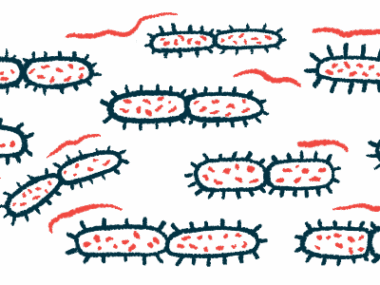Urinary Fas a potential biomarker for antibiotic-linked kidney injury
Researchers analyzed urine samples before and after antibiotic treatment
Written by |

Fas, a protein that triggers programmed cell death, was identified as a potential urinary biomarker for kidney injury associated with certain antibiotics used to treat lung infections in people with cystic fibrosis (CF), a new study shows.
To identify Fas as a biomarker, researchers used a three-dimensional cell-based system that mimicked the filtering tubes within the kidneys and then validated it in a group of CF patients undergoing antibiotic treatment.
“To date, this is the only investigation into the efficacy of urinary [Fas] as a biomarker of kidney injury in CF,” the researchers wrote in the biomarker study “Identification of prognostic biomarkers for antibiotic associated nephrotoxicity in cystic fibrosis,” which was published in the Journal of Cystic Fibrosis.
People with CF are at a higher risk of lung infections due to the buildup of abnormally thick mucus. Infections can trigger a sudden worsening of lung symptoms called pulmonary exacerbations, which are associated with a decline in lung function.
Lung infections and exacerbations are commonly treated with high doses of antibiotics over long periods, which increases the risk of side effects. Some antibiotics, such as colistin (polymyxin E) and aminoglycosides, a class of antibiotics that includes tobramycin, amikacin, and gentamicin, are known to cause kidney injury with long-term use.
Creatinine in urine or blood is a standard clinical biomarker for detecting kidney injury from either disease or treatment side effects. It’s nonspecific, however, and often lags behind kidney injury, according to scientists at the University of Washington. It’s also a poor biomarker in CF as levels are often abnormally low in patients, resulting in kidney health being overestimated and problems being detected late.
Identifying kidney injury biomarkers
Because of creatinine’s limitations, the researchers “sought to identify prognostic biomarkers of antibiotic-associated kidney injury in patients with CF.”
The investigation, partially supported by the Cystic Fibrosis Foundation, was conducted in two stages. First, candidate biomarkers of kidney injury were identified using a three-dimensional cell-based device that mimicked the filtering tubes within the kidneys. They were then validated in patients undergoing treatment with antibiotics associated with kidney injury.
Human kidney proximal tubule epithelial cells, which line the filtering tubes in the kidneys, were isolated from kidney tissue and grown in the device’s tubing system. Fluid with and without colistin was allowed to flow through the cell-lined tubes for three days, then the activity of genes within the cells was compared.
Among the genes whose activity changed after colistin exposure, Fas gene activity was increased 1.63 times, a significant change. Fas protein was also significantly higher after colistin. Fas is a signaling protein that initiates apoptosis, or when cells self-destruct when they’re not needed.
Other genes that encode proteins involved in apoptosis were also more active with antibiotic exposure, “suggesting that pathways of apoptosis and inflammation were dysregulated,” the researchers wrote.
Fas as early urinary biomarker
To validate Fas as a clinical biomarker, researchers analyzed urine samples from 16 CF patients before and after treatment with colistin, aminoglycosides, or both for a pulmonary exacerbation. The group had a mean age of 33.8 and nine were women (56%). The duration of antibiotic treatment lasted from 12 to 14 days.
Although only one participant was diagnosed with chronic kidney disease (CKD) before antibiotics, marked by a sudden onset of kidney problems, seven (44 %) developed CKD during a median follow-up of three years.
Among the urine samples collected, urinary Fas concentrations were 2.53 times higher, on average, during antibiotic therapy than before, a statistically significant difference. After treatment, urinary Fas levels returned to within normal ranges, “suggesting that the increase in [Fas] concentrations was transitory,” the researchers wrote.
Despite the increase in urinary biomarker levels, the occurrence of acute kidney injury (AKI) based on blood creatinine levels was uncommon, with only two participants diagnosed with the condition during antibiotic treatment.
The researchers also noted the urinary biomarker was not associated with kidney problems during antibiotic treatment, “suggesting that patients with CF may have subclinical AKI during antibiotic therapy.” Subclinical AKI was defined as elevated urinary biomarkers without elevated blood creatinine.
Urinary Fas levels during antibiotic treatment were strongly associated with developing CKD. With every doubling of Fas levels, the risk of kidney disease increased 2.28 times. Even when adjusted for age and levels before treatment, Fas remained associated with CKD. Elevated Fas was also linked with a 2.09 times higher risk of AKI.
“Overall, these findings suggest that urinary [Fas] is a novel biomarker of subclinical kidney injury and may provide early signs prior to a rise in [blood] creatinine in patients with CF at risk of long-term kidney dysfunction,” the researchers said.







